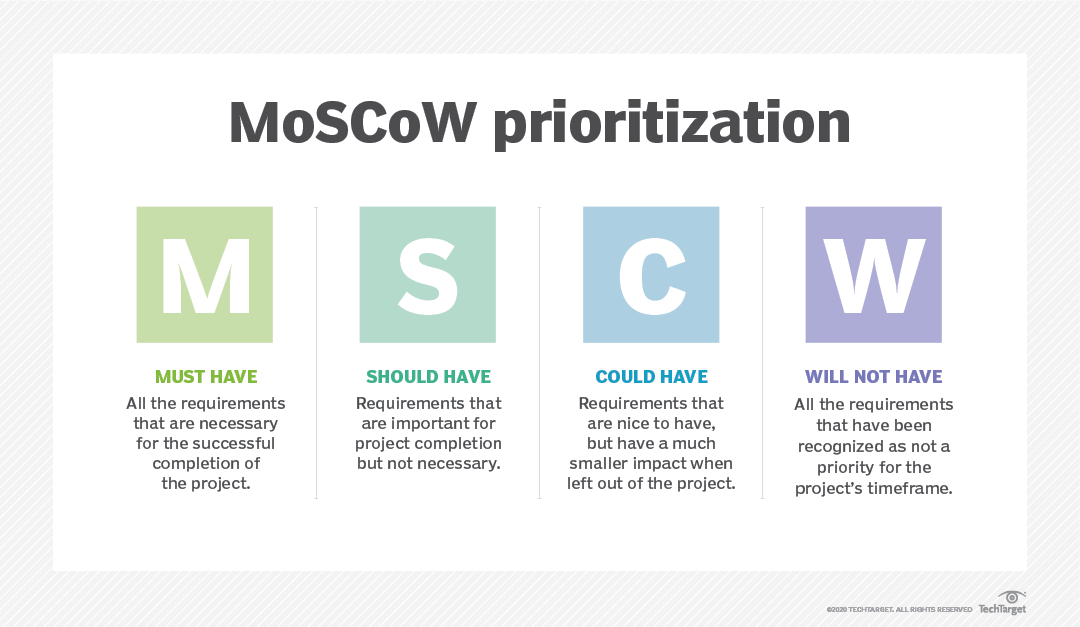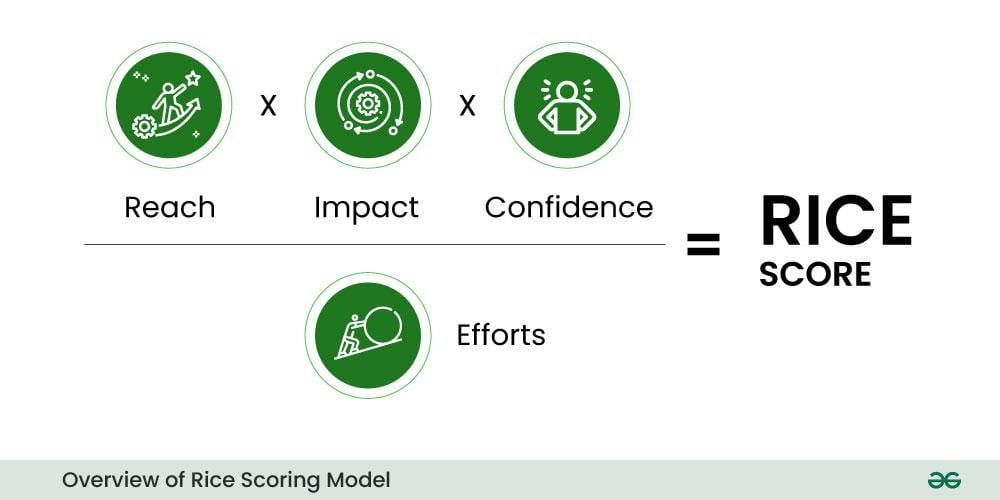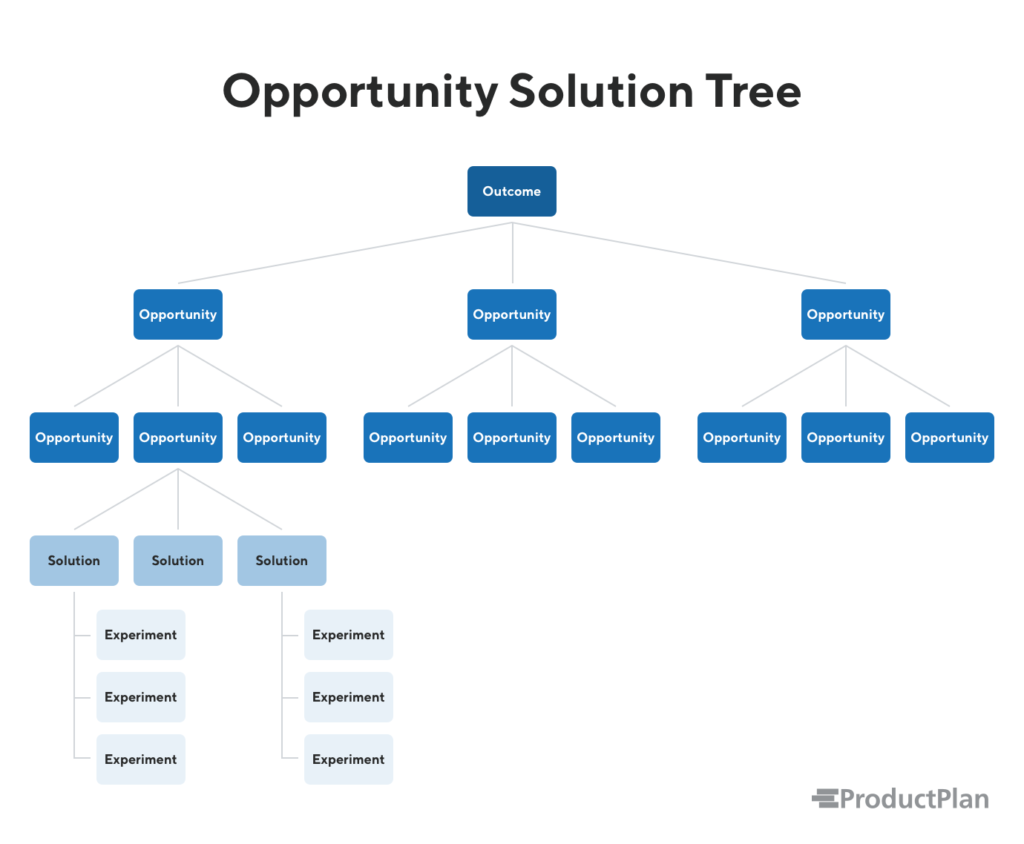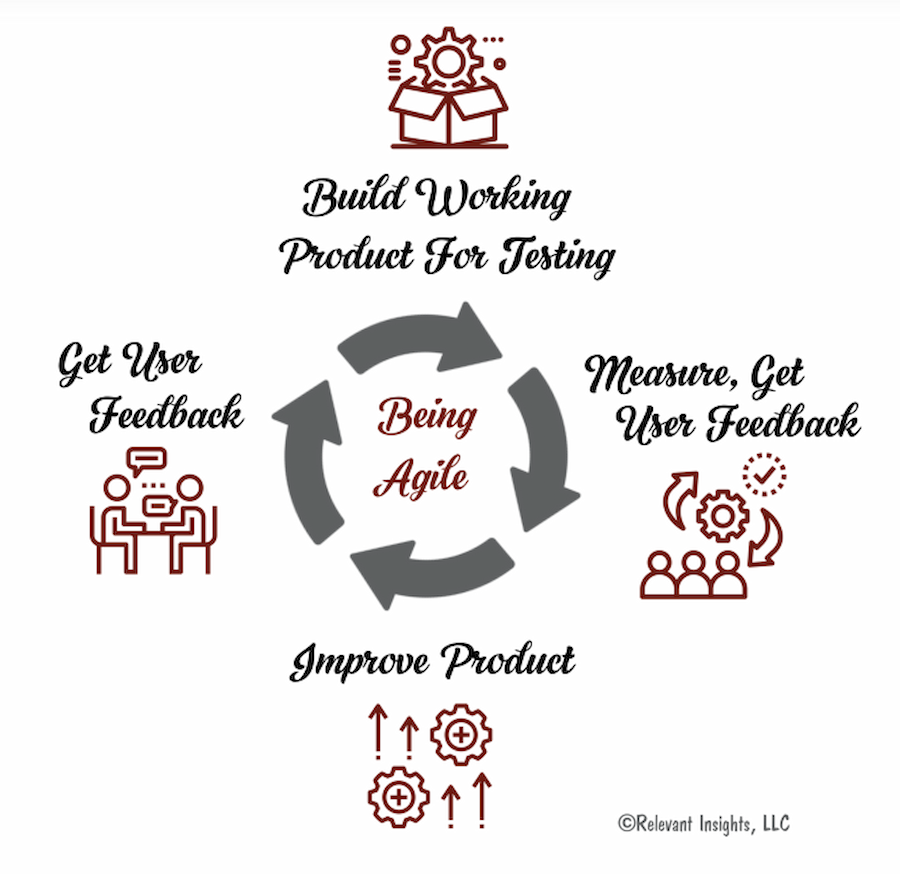How to Prioritize Product Features: Avoid Mistakes, Unlock Success

Okay, imagine you’re in charge of developing a new product that will take the world by storm.
Exciting isn’t it?
That is until multiple voices start playing tug-of-war in your head about what a good product should be. You have your bosses, your clients, developers, and sales staff, all asserting they have the right answer.
But what is the right answer?
Ultimately, the best product is what the market wants.
But sometimes, the conflict of multiple ideas makes the journey toward product-market fit unclear.
Fortunately, there are ways to see through the fog.
Read this article on how to prioritize product features to learn the most effective systems for the purpose, common feature-prioritization errors to avoid, and how to sidestep these mistakes.
Let’s jump right in!
The solid foundation of a good product
Before we discuss the frameworks and strategies to better prioritize features, it’s important to get one thing right to save your product from the recycle bin of failure.
Know thy customers.
Specifically, get insights from a sample set of your potential or actual customers. What do they really want in a product? What are their pain points in life as a whole? Can your product address these problems or inconveniences?
Gathering extensive information from your customers or target market is crucial. This approach can lead to the creation of top-notch product features.
Now sometimes, well-meaning bosses or colleagues may assert that their feature concepts should be the ones that make it to the final product.
With solid market data, you can ensure that the product features implemented are the ones that will actually lead to market success and not the ones that merely sound “correct,” “awesome,” or “amazing.”
Source: Attest via YouTube
When building apps and websites, our product and project managers always encourage our clients to balance their vision with feedback from potential or actual customers. After all, no matter how excellent an app idea or website concept is, it is doomed from the start if nobody or only a handful of people want to use it.
Check out our article on developing an app idea to learn how to transform market feedback into the right features for a digital product. You can pick up a lot of insights from this guide, even if you’re building something quite different from an app or website.
Now that you know how to use customer feedback to know what product features to work on, it’s time to study some of the most effective frameworks for prioritizing these functionalities.
5 popular frameworks for prioritizing product features
Our product strategists and developers recommend the use of the following frameworks when determining what product features you should enhance or develop:
Framework #1: The MoSCoW method
The MoSCoW Prioritization Technique, or MoSCoW Analysis, is a straightforward method for categorizing product features by importance.
This feature prioritization framework is especially useful when you’re building a product from scratch and you have no idea how the market will respond to it.
When developing mobile apps and web applications for numerous clients, we don’t go all out with so many amazing features all at once. We start by building high-quality minimum viable products (MVPs) with only the most basic features. We then add small and gradual improvements as the digital products gain more market traction and customer feedback.
Since the MoSCoW method is good at delineating which features are absolutely necessary and which ones are not, you can develop your product more efficiently. When you use this framework with the MVP approach, you can launch your product more quickly while maximizing your chance of market success.
This simple framework effectively communicates priorities to product managers, project managers, and other relevant team members by dividing features into the following main categories, the first letters of which form the MoSCoW acronym:
- Must Have. Essential features without which the product would be unusable or fail to deliver business value.
- Should Have. Important but not critical features that enhance the product’s functionality.
- Could Have. Non-essential, nice-to-have features that improve user experience but are not vital.
- Won’t Have. Features deemed not worth the development effort, similar to low-priority items in other frameworks.

Source: TechTarget
As you can see, MoSCoW is pretty simple and straightforward.
However, it can be challenging to identify the “MustHave” features, potentially overloading the development team.
To better understand how to differentiate “must-haves” from the rest of the MoSCoW feature categories, our article on MVP examples shows how tech companies started with basic functionalities and gradually added enhanced features.
Framework #2: Kano model
Developed by Professor Noriaki Kano in the 1980s, the Kano model is a popular tool for prioritizing features to maximize customer satisfaction.
If MoSCoW is good for starting a new product, the Kano framework is especially useful if you already have an established basic product and want to add feature enhancements to increase revenue.
The Kano model helps you assess which additional product features provide the best customer satisfaction.
To identify how your customers value specific features, you may use questionnaires that gauge their reactions to the presence or absence of additional or newly enhanced features.
The Kano framework categorizes features into three main types:
- Threshold features. These basic functionalities make your product just good enough for customers to use it. Investing heavily in these features won’t significantly excite your customers because they’ve come to expect that these are your product’s bare minimum.
- Performance features. These yield a proportional increase in customer satisfaction with increased investment. The more you enhance these, the more customers appreciate your product.
- Excitement features. Also known as “delighter” features, these product attributes can dramatically increase customer delight. Customers may not expect them, but their presence significantly creates a positive impact.
While the Kano model helps you determine what product enhancements are beneficial and which ones are not, it does not specifically address the cost factor. In other words, you may know what sort of feature improvements you should invest in, but you won’t have a precise estimate of how much these enhancements cost.
The Kano framework also does not take into consideration time-to-market or feasibility, factors that also affect product success.
Despite some deficiencies, the Kano model offers valuable insights into customer priorities, which leads to better product-market alignment.
Framework #3: RICE scoring
The RICE scoring system, developed by Intercom, is a method to prioritize features by taking into account these factors: Reach, Impact, Confidence, and Effort.
Reach measures how many customers will use a feature over a specific period. For instance, it answers, “How many users will benefit from a video chat feature monthly?”
Impact assesses the extent to which the feature will achieve the desired goal, such as increasing customer satisfaction or reducing churn (basically a reduction in customers or users). This metric is rated on a scale: 3 for massive impact, 2 for high, 1 for medium, 0.5 for low, and 0.25 for minimal.
Confidence reflects how certain the team is about their Reach and Impact estimates. High confidence is above 80%, while anything below 50% is considered unqualified, thus deprioritizing risky features.
Effort accounts for the amount of work that team members have to put in, measured in person-months. So, for instance, if you have a 4-person product team and it will take you 3 months to develop a new feature, your effort value is 12 person-months (multiply 4 by 3).
To calculate a RICE score, multiply Reach, Impact, and Confidence, then divide by Effort.
A high RICE score means that a product feature you intend to work on is worth pursuing. As you can see in the formula, “Effort” is the divisor. In other words, the less effort to develop a product feature, the better. Also, any increase in either “Reach,” “Impact,” or “Confidence” is a plus.

Source: GeeksforGeeks
RICE is ideal for teams that appreciate data and numbers as the framework excels when used with tools like spreadsheets.
But given the relative complexity of the RICE model, it may not be the most suitable prioritization method for visually oriented teams or those handling numerous features.
In essence, RICE is valuable for evaluating the precise impact and benefits of product features.
Framework #4: Impact-effort matrix
The Impact-Effort Matrix is designed for teams or product leaders who prefer more visual representations. The framework uses a 2D matrix that plots the “value” or impact of a feature against the difficulty of developing that functionality, or “effort.”
To use the matrix, you will list all the features you want to develop or the hypotheses you intend to test. The rest of your team will then vote on each feature’s position based on its impact and effort. Whatever features you will pursue will fall into one of four quadrants:
- Quick wins. These are low-effort, high-impact features that generate growth and should be prioritized.
- Big bets. High-effort, high-impact features that require careful planning because they involve substantial risk.
- Fill-ins. Low-impact, low-effort features that are secondary and should only be addressed when more critical tasks are on hold.
- Money pits. High-effort, low-impact features that drain resources and should be avoided.

Source: Product School
As you can see, the visual nature of the Impact-Effort Matrix makes prioritization quicker and easier, especially if you are dealing with relatively few features to work on. The framework’s graph also fosters collaboration in your entire team because it is relatively easier to understand.
Despite its benefits, the matrix lacks a mechanism for prioritizing multiple “Quick Wins.” The Impact-Effort framework also loses efficacy the more features you have to prioritize.
Overall, however, the Impact-Effort Matrix is a suitable tool to roughly estimate how much you can benefit from every time and resource invested in product features.
Framework #5: Opportunity solution tree (OST)
Another visual tool for prioritizing product features is the Opportunity Solution Tree (OST).
The framework is designed to outline the path to achieving desired outcomes. By centering on customer needs and potential solutions, OST can aid you or your product teams in brainstorming, organizing, and prioritizing product functionalities.
Here is how to implement OST:
- Define the outcome or metric. Clearly articulate the single business goal you want to address. You can more clearly determine the outcome you want by asking questions like the following: Do you want to increase revenue? Is enhancing customer satisfaction a priority? Do you have to retain your app’s users?
- Identify opportunities. Conduct user research to uncover customer needs and pain points. In OST, pain points can be opportunities. When identifying opportunities, ensure that they connect directly to a relevant outcome. For instance, if your customers want more multimedia features in your app, check if adding these functionalities has a direct or significant bearing on your desired outcome.
- Brainstorm solutions. After you have properly aligned opportunities with the desired outcome, explore creative and diverse ways to address each opportunity. However, make sure that each potential solution is relevant to an opportunity.
- Refine and prune. Take stock of your brainstormed solutions and narrow them down to the most valuable ones.
- Develop assumption tests. Plan how to test the validity of your remaining solutions.

Source: ProductPlan
OST is especially valuable because it quickly indicates the relevance of your feature ideas to your business goal. Its graphical nature also lets you see if you are working on too many opportunities or solutions.
And since OST is driven by customer insights, the framework increases the chances that your product features will succeed in the market.
However, OST has its drawbacks.
Its main weakness is it can only work with one business goal or outcome at a time.
And unlike RICE, the framework has no scoring system for reach or impact. In other words, OST does not factor in business metrics when judging the usefulness of a product feature.This lack of precision in assessment can lead to a misalignment between business goals and the features under development, leading to a wastage of time and resources.
Despite its limitations, the alignment and visual clarity that OST brings to product teams make it a worthwhile approach to help achieve targeted outcomes. Its iterative process helps refine assumptions for a more streamlined product development process.
Now, all five frameworks I just discussed are like tools. Their effectiveness relies partly on the people who use them. And once the human tendency to make mistakes comes into play, the power of these feature prioritization frameworks is weakened.
That’s why it’s important to avoid the following mistakes when prioritizing product features.
5 common errors in feature prioritization and how to correct them
Error #1: Lack of a unified scoring guide
Without a clear scoring system, even the best prioritization framework would not be helpful due to conflicts in interpreting metrics. This ambiguity can lead to conflicts, with some subjective opinions appearing objective and a common policy harder to come by.
Solution
Develop a shared scoring guide with specific, objective definitions and examples tailored to your team and product. While disagreements may still happen, they can help the team find blind spots and improve alignment.
Error #2: Rigidity in adopting prioritization frameworks
It’s not practical to think you can get feature prioritization right on the first try or to stick to just one or two frameworks. Even if your current framework seems satisfactory, there’s always room for improvement, especially as your business or organization grows.
Relying solely on a framework that does not accommodate change is risky, given that digital transformation trends have shown how highly dynamic the tech and business landscapes are.
Solution
As I discussed earlier, the first versions of the mobile and web apps we build for our clients have only basic features. Based on user feedback, we add small and gradual improvements to lead our clients to long-term success. This is how we incorporate the Agile framework in our app development process.

Source: Relevant Insights
You can also incorporate some elements of Agile when choosing your feature prioritization framework or combination of frameworks.
Encourage team members to provide feedback. After all, they are the “users” of the feature prioritization frameworks you will choose to adopt. After each phase of feature development, conduct regular reviews to evaluate team feedback and be open to adopting new frameworks when necessary.
And take note that instead of making drastic changes, opt for frequent, small iterations.
You must also keep in mind that new processes need time to show results.
Australian sports prediction company PointsBet had been in business for three years before they had a major breakthrough. In 2020, the company was able to improve its business growth strategy and expand to the U.S. market while increasing its valuation to $2 billion. To learn about their unique success story, check out the PointsBet case study.

Error #3: Interference from upper management
This shortcoming is more prominent in hierarchical or personality-driven organizations.
Whenever superiors ask their product team to realign feature priorities, often without a logical reason, the interference from above causes great frustration in the team members below.
Though there are many causes for this workflow roadblock, it may stem from a misalignment between company strategy and product strategy. This misalignment occurs for several reasons, which include:
- Management often confuses tactics with strategy, dictating specific solutions instead of providing a clear overall direction
- The rationale behind strategic decisions is not communicated effectively
- There is no established process for teams and managers to share their learnings and evidence
- The company strategy lacks agility, even when it no longer aligns with current needs
Solution
As a product leader, whether a Chief Product Officer (CPO), director, or team lead, it’s your responsibility to bridge the gap between teams and senior management. Ensure clear, bi-directional communication and proactively address misalignments. Start by evaluating:
- How are insights shared across teams and between teams and management?
- Does every team have equal access to key information?
- What information does my team need but currently cannot access?
Now what will you do if your company strategy lacks agility?
Despite a traditional company’s resistance to change, you can work toward promoting intrapreneurship within your organization. Intrapreneurship is essentially a system where an employee can freely pursue innovative activities within the confines of a conventional corporation.
Traditional companies tend to place more premium on seniority over innovation. Hence, the more traditional an organization is, the more likely superiors will disrupt their product development teams.
By reading the right books and knowing how to assert respectfully, you can better convince your superiors to listen to your team and minimize unreasonable interference in feature prioritization pipelines.

Source: Investopedia
Error #4: Bias for recent developments
Product development teams often add new items to the backlog more quickly than they can address old ones. As these feature-related tasks accumulate, teams tend to overlook older items because people tend to be focused on newer ideas.
Solution
To combat this recency bias, regularly review and prioritize older backlog items based on new evidence. Track the “freshness” of each item, and if an item hasn’t been updated in a set period, reassess its relevance. If it’s highly outdated, remove it permanently.
Error #5: Failure to plan for contingencies
Product development can be unpredictable.
From dependency changes to team members getting sick, many unforeseen factors impact the effectiveness of feature prioritization.
Without an established system to handle these contingencies, teams may lose confidence in their prioritization processes.
Solution
Establish a set of rules for managing unpredictable events without overriding your prioritization system. For example:
- To accommodate unexpected dependencies, a project blocked by other tasks should resume its position in the backlog once the blocker is removed, without disrupting ongoing projects.
- To manage project urgency and unexpected team absences, allocate a fixed amount of resources each month to accelerate high-priority projects with hard deadlines, like scheduled launches or seasonal campaigns. Other non-urgent tasks should still follow the standard procedure.
Prioritize your long-term success
When figuring out how to prioritize product features, the right foundations, frameworks, and strategies are necessary to avoid pitfalls and attain long-term success.
Whether you’re developing product features or not, knowing your priorities is important to set you in the right direction.
And one of the best priorities you can focus on is planning for the future.
In an increasingly digital global economy, it’s important to stay ahead of the curve by leveraging technologies like mobile apps, web applications, and websites.
We happen to specialize in these technologies at Appetiser Apps.
But we offer more than your average app or site development work. Whether you need to attract investors to support your app idea or want to learn how to digitalize your operations, you can take advantage of our end-to-end guidance and support.
Your life is a product of your priorities. Turn your life around by booking a free consultation with us. Let’s talk about how digital technology can ensure your success in the long haul.

Jesus Carmelo Arguelles, aka Mel, is a Content Marketing Specialist by profession. Though he holds a bachelor’s degree in business administration, he also took courses in fields like computer troubleshooting and data analytics. He also has a wealth of experience in content writing, marketing, education, and customer support.


